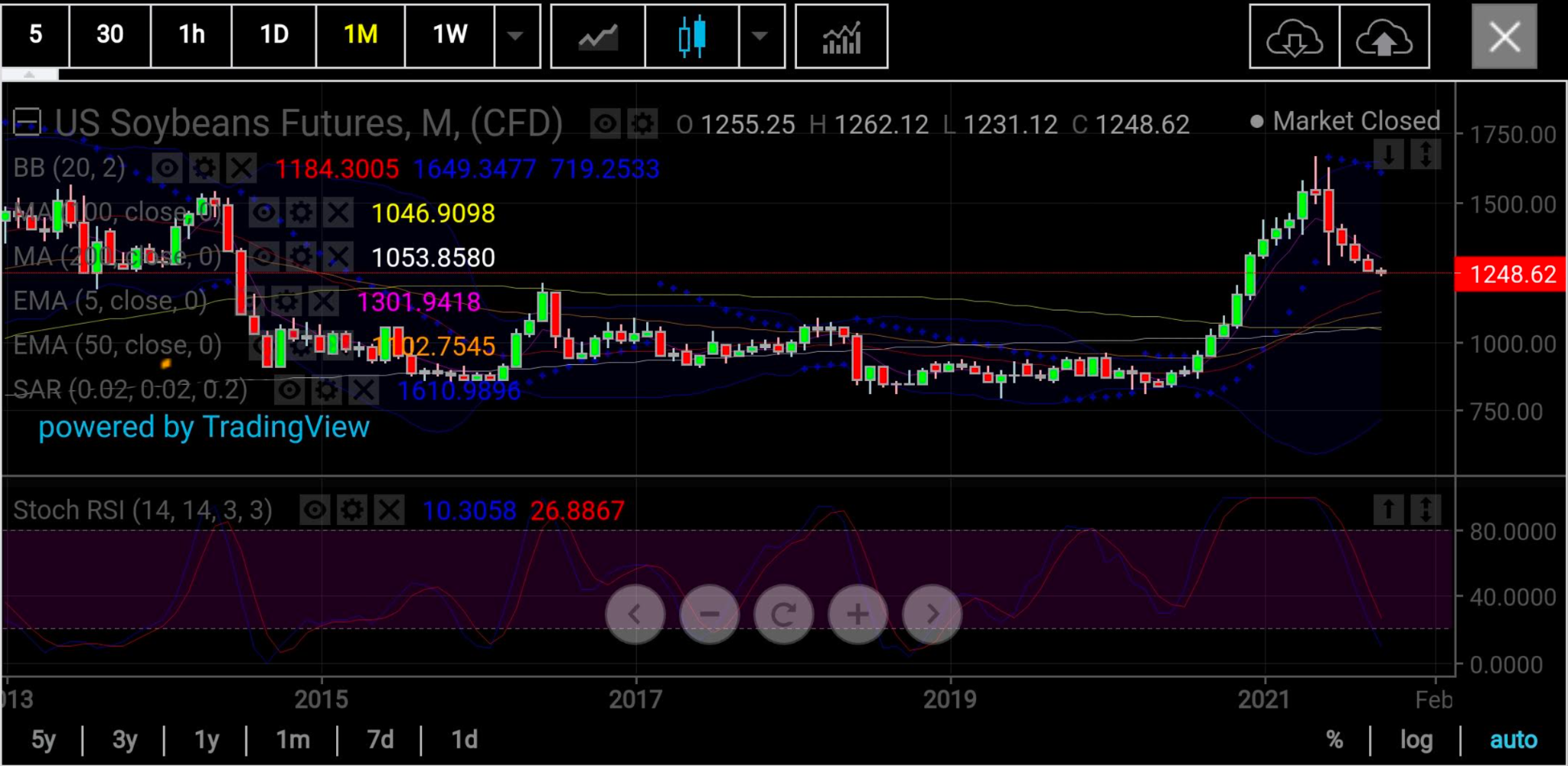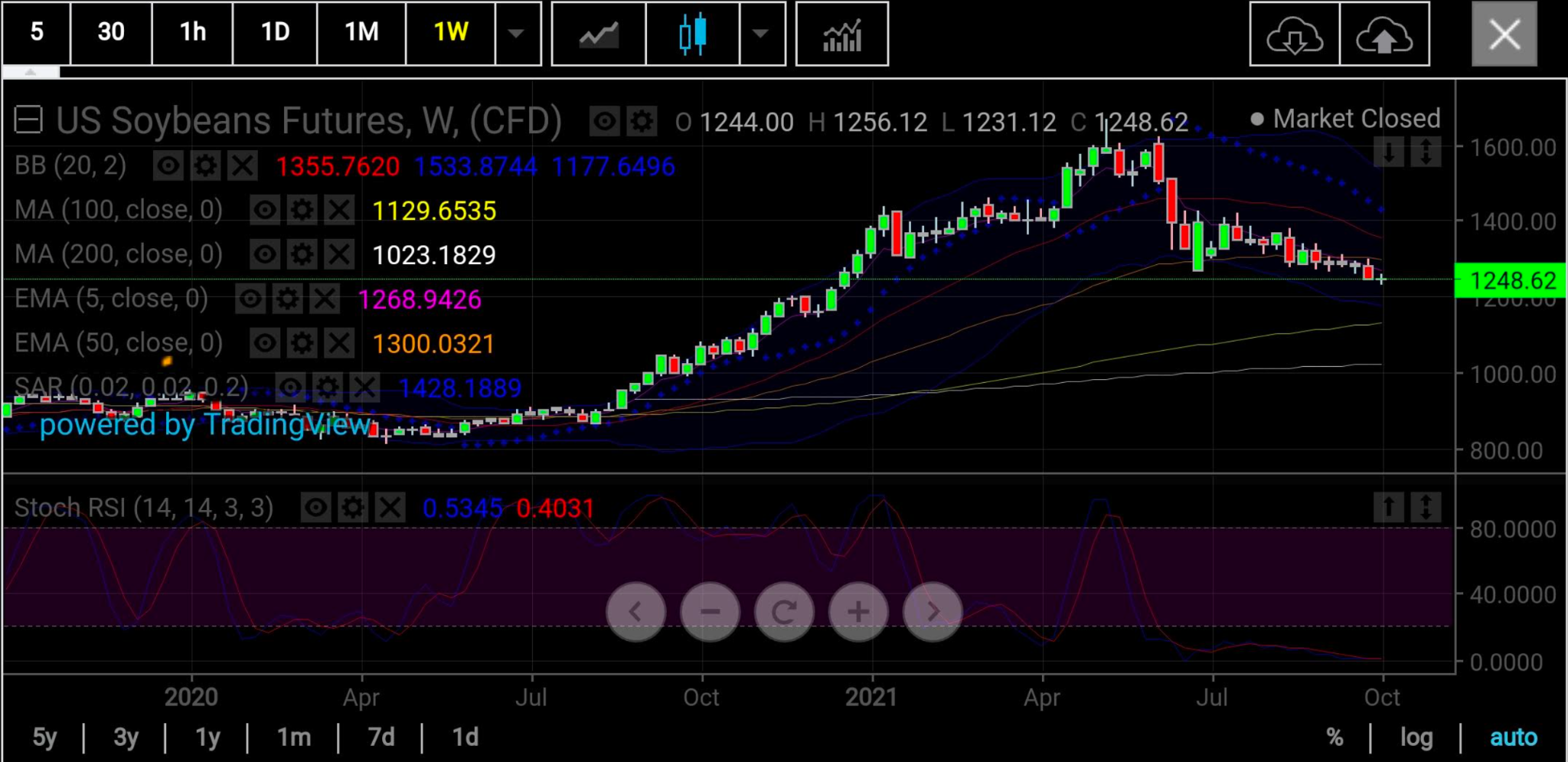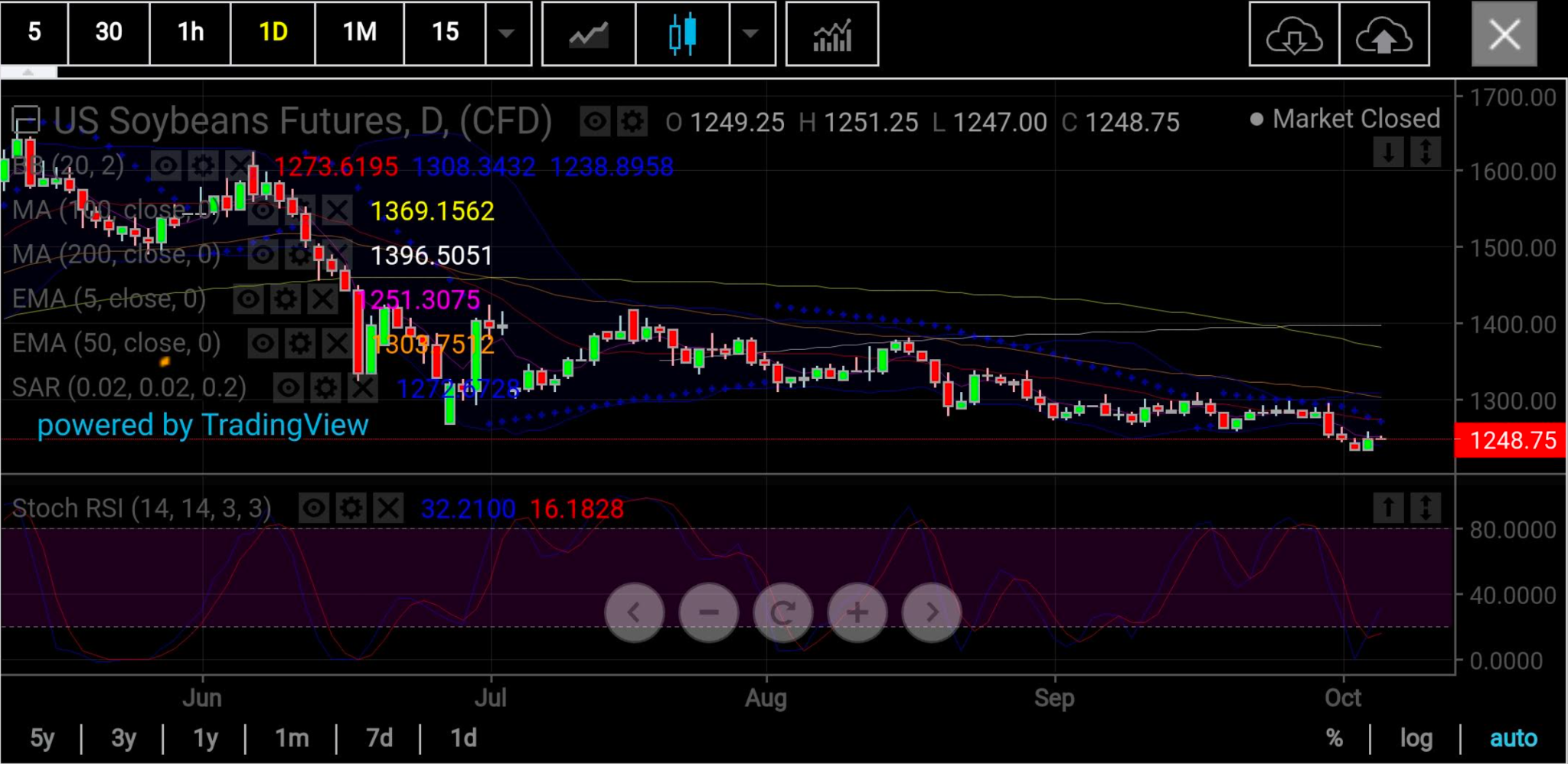It’s the only one of the three major US agricultural markets that is in the red for the year. It’s fallen almost 20% from its May highs and prices have just hit a nine-month low.
Nothing has gone well lately for soybeans, at least from the perspective of market bulls.
Futures of the basic resource for soy milk, soy flour, soy protein, tofu and many other non-food and retail products are down 5% on the year.

All charts courtesy of skcharting.com
For comparison, futures of wheat, used primarily for making bread, noodles and crackers, are up more than 16% since the year began.
Futures of corn, used for making starch, sweeteners and biofuel, have gained more than 10% on the year.
Soybeans are also trailing prices of soyoil, which are up 41% since the start of 2021. Soyoil is largely up on demand for biodiesel, which has been tracking prices of both oil and ultra-low sulfur diesel, which have gained 62% and 68%, respectively.
The only component of the soy complex that’s lagging soybeans is soymeal, which is down 26% on the year on restrained demand from China’s hog industry and its revamped guidelines for import of feed.
Soybeans’ problem is basically overproduction. “Soybean planting moved up to 4% complete, which is double the pace of last year,” said Dan Hueber, author of the Hueber Report, a daily markets’ journal on US agriculture.
But after five straight months of losses and heading into what could be its sixth month in the red, are soybeans on the cusp of a rebound?

The front-month contract for soybeans on the Chicago Board of Trade, November, was headed on Tuesday for its second positive week in three, though the gain itself was marginal, at 0.1%.
Interestingly, in Tuesday’s session, November soybeans hit a nine-month low of $12.31 per bushel before settling up 1.3% at almost $12.50.

That’s a sign of more weakness ahead, said Sunil Kumar Dixit, chief technical strategist at skcharting.com.
“Soybean has been largely oversold with Stochastic Relative Strength Index readings of 0.5/0.4 on the weekly chart and 32/16 on the daily chart,” said Dixit.
“Prices have tested $12.31 and oversold Stochastic is causing some bounce back from the lows. However, unless prices close above the 50-week Exponential Moving Average of $13.00 and the 50-EMA on the daily chart, it's very likely that the middle Bollinger Band of $11.84 on the monthly chart can be tested. Below this sits the 100-week SMA of $11.29, which can be a possible extension for bearish momentum.”
But beyond those levels, a rebound was very possible, Dixit said.
“The long distribution phase leading to the oversold state of the commodity may find support at mentioned critical levels to regain the up move again. Resumption of uptrend may be affirmed with a weekly close above the 50-EMA of $13.00.”
Disclaimer: Barani Krishnan uses a range of views outside his own to bring diversity to his analysis of any market. For neutrality, he sometimes presents contrarian views and market variables. He does not hold a position in the commodities and securities he writes about.
